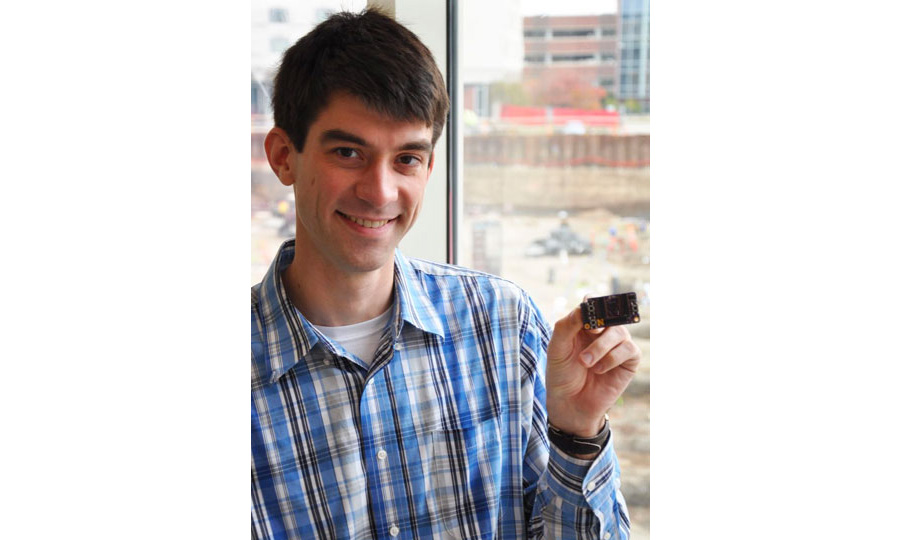Calendar Icon
Mar 25, 2022
Person Bust Icon
By Phil Carter and Karl Vogel
![]() RSS
Submit a Story
RSS
Submit a Story

When electrical engineering majors registered for a new embedded systems class in the spring of 2022, the students chose a course assembled by one of their own.
As a graduate student, Sam Murray knew the day would come when he had to teach a Nebraska Engineering course, so the Cortland, Nebraska native decided to build his own, taking a "by-a-student, for-students" approach.
With assistance from Sina Balkir and Mike Hoffman, professors in electrical and computer engineering (ECE), Murray began developing the embedded systems class using ECE's own integrated circuit solutions in addressing a variety of research needs, including the intersection of the hardware with software for operation and control related to the use of "smart" electronics.
"The class (ECEN 398) is about electronics and how embedded systems work," said Murray, who earned a bachelor's degree in electrical engineering from UNL in 2018 and is a current Ph.D. student. "Like a cellphone is a complicated version of 'smart' electronics or even a garage door when it receives messages to open or close."
Balkir says Murray developed a custom version of the public domain RISC-V processor and created his own embedded controller around it to be included in the single "System-on-a-Chip" (SoC) design. RISC-V, the Linux of the chip world, is a technical breakthrough when it comes to chip design and for Murray to fabricate his own design for the curriculum didn't go unnoticed.
"This is a first in our curriculum, where an embedded systems class leverages an in-house microcontroller with an anticipated positive impact on the undergraduate research activities within the department," stated Balkir, who has been a member of the ECE faculty since 1999. "As the embedded controller chip is custom designed by one of our own, the resources on the chip are aligned well with the degree requirements in several pivotal areas such as embedded systems applications, interfacing with outside information sources, employing both analog and digital processing techniques, and programming."
Murray has been fully instrumental in all aspects of the course from design of a custom RISC-V to its accompanying documentation, including software tools, evaluation kits and application examples.
"Sam is very talented and has a lot of self-determination," added Hoffman, who also serves as one of Sam's co-advisers for graduate school. "And he's very curious, too. That's a great combination."
Murray's curiosity turned into motivation to teach by example and show other students how important it is to be creative and resourceful when it comes to this type of technology.
"A good engineer is one who's passionate about what they're doing," explained Murray, who was awarded a Milton Mohr Graduate Fellowship in 2018. "This is the passion stirring in me, all the cool things I could do in designing our own microchips so we can show the students how it's done."
When it comes to a fervor for electronics, Murray didn't have to go far to find influences, especially within his own family. His grandfather is an ardent ham radio operator while his father's career oversees electronic security for banks. He also credits teachers at Norris High School for allowing him to embrace his enthusiasm of electronics.
"When it came to robotics and programming," Murray said with a smile, "I just ate it all up."
Two months into the spring semester, Murray said the new class has been a hit with students.
"They seem excited about the custom chip and the projects they have been doing with it," Murray said. "A lot of them have found it challenging because there are no online resources for the chip (it is, after all, custom made), and so have had to ask me questions directly or try to read the documentation and determine the answers themselves.
"Several of them have encountered one of those magic moments when it suddenly clicks for them, and they realize how a part of the circuit works or the reason behind some task they have to perform. In some, I can see the excitement building in their eyes, and their eagerness to apply their knowledge is tangible. Those moments are supremely gratifying for me as a teacher."
Submit a Story